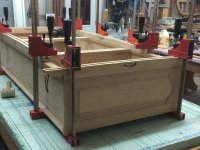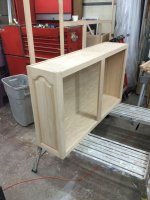Why would pocket screws ever be used in frameless cabinet construction with tongue and groove joints clamped after glueup?
The joints would never come apart. Is it just for speed of assembly to avoid clamps? I'm just a hobbyist, not doing this for a living so speed is not a critical factor for me.
The joints would never come apart. Is it just for speed of assembly to avoid clamps? I'm just a hobbyist, not doing this for a living so speed is not a critical factor for me.


